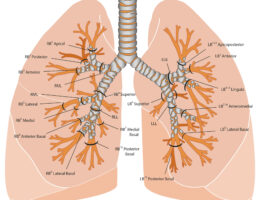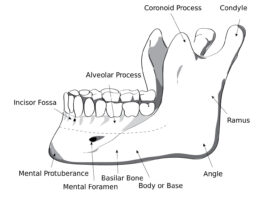The femur is the longest and strongest bone in the human body, located in the upper leg, between the hip and the knee joints. Here is a brief description of the labeled parts of the femur:
- Head: The rounded proximal end of the femur that fits into the acetabulum of the hip bone.
- Neck: The constricted area just below the head of the femur.
- Greater trochanter: The large, bony prominence on the lateral (outer) side of the proximal femur.
- Lesser trochanter: The smaller, bony prominence on the medial (inner) side of the proximal femur.
- Intertrochanteric crest: The ridge of bone that connects the greater and lesser trochanters.
- Intertrochanteric line: The line of bone that runs between the greater and lesser trochanters on the posterior side of the femur.
- Shaft: The long, straight part of the femur that extends from the trochanters to the distal end.
- Medial condyle: The rounded prominence on the medial side of the distal femur that forms part of the knee joint.
- Lateral condyle: The rounded prominence on the lateral side of the distal femur that forms part of the knee joint.
- Intercondylar notch: The deep notch between the medial and lateral condyles of the distal femur.
- Patellar surface: The smooth, flat area on the anterior surface of the distal femur that articulates with the patella (kneecap).
These are the main labeled parts of the femur. The femur plays a critical role in supporting the weight of the body, and is involved in various movements such as walking, running, and jumping.



